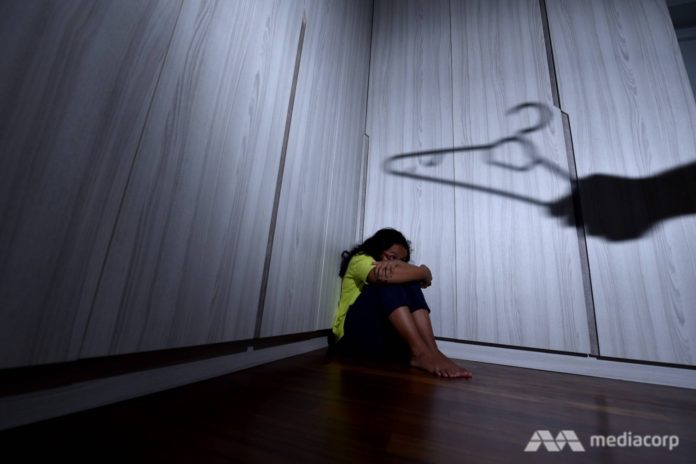SINGAPORE: In recent weeks, Singaporeans have been gripped by a spate of alleged child abuse cases that have led to the loss of innocent young lives.
On Nov 15, a 27-year-old man was charged with murder after he allegedly slammed a nine-month-old baby’s head on the floorboard of a van. The baby had died from his injuries.
In another case, a couple, both 27, are on trial and facing multiple charges of ill-treating and assaulting the child in their one-room rental flat. They are also charged with committing murder with common intention.
In September, another couple was charged with the murder of their two-and-a-half-year-old child. They are accused of killing their daughter at Block 52 Chin Swee Road in March 2014 but the girl’s remains were discovered only recently.
While these cases remain before the courts, statistics from the Ministry of Social and Family Development (MSF) show that the number of child abuse cases has jumped threefold over the past five years.
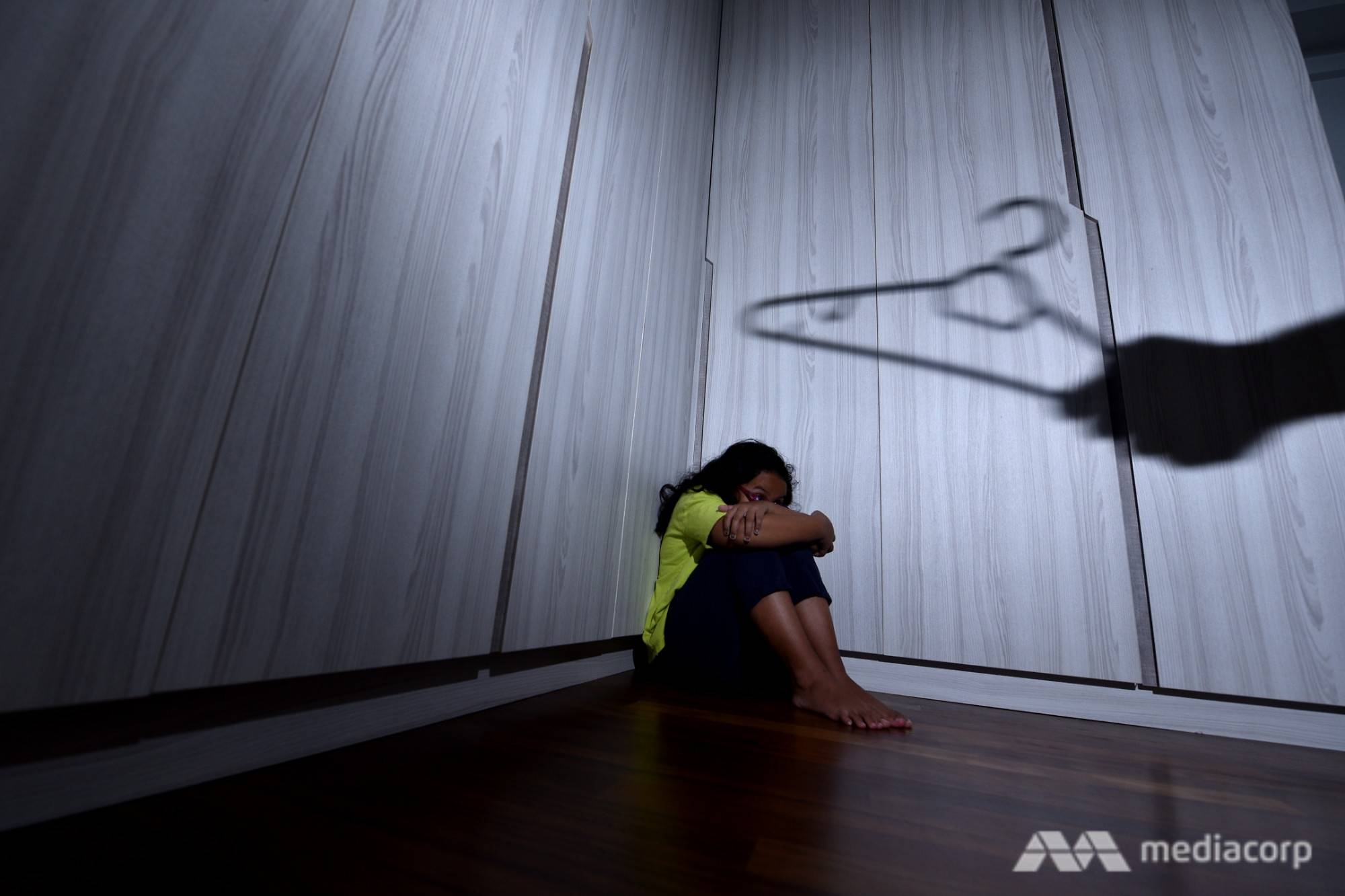
Photo illustration of a child being abused (Photo: Jeremy Long)
In 2014, there was a total of 381 cases investigated by MSF’s Child Protective Service. The figure went up to 551 in 2015, and 873 in 2016. The number edged up to 894 in 2017, before jumping to 1,163 last year. For this year, it is estimated that the number of cases would reach over 1,000, similar to 2018.
MSF said that the number of cases has increased since 2015, when it “introduced more rigorous screening tools and training for professionals including social workers, educators, counsellors and health professionals over the years”.
“This has helped to sharpen the ability of sector professionals to pick up safety concerns for a child and seek appropriate intervention,” said an MSF spokesperson.
The rising number of cases could also be partly due to greater awareness generated by community outreach and public education efforts on child protection and family violence, said Ms Ng Sook Wai, principal counsellor at child protection specialist centre Heart@Fei Yue.
Still, the number of cases reported may be the tip of the iceberg.
READ: Chin Swee Road toddler death: Local MP Lily Neo expresses concern, sadness
Social service workers and former victims interviewed said that child abuse could be under-reported. Among other reasons, the victims often do not know who they can turn to for help and even when they confide in older family members, there is a tendency to keep it within the family due to the stigma and shame.
Ms Laika Jumabhoy, assistant manager at the sexual assault care centre run by the Association of Women for Action and Research, noted that it is mandatory for social welfare agencies to report cases of child abuse to ensure the child’s safety.
However, this may deter a family from coming forward to seek help, she said.
“This may be because the family is not ready yet to make an official report, for whatever reasons, perhaps they feel shame or are themselves still processing what has happened. In these situations, a child and their family might not receive the full amount of professional support that would be available to them,” she added.
READ: Chin Swee Road death – agencies, social workers ‘did not suspect’ toddler had gone missing
Ms Jumahboy also pointed out that if the report has been made and the child is removed from his parents’ custody, this removal can be “extremely hard” on a child and often makes the child feel like he or she is the one being punished.
She said that parents or guardians may struggle to believe their children when they speak up about their experiences. However, it is crucial for adults to believe them, she stressed.
“Some may blame themselves for not being able to protect their child. They may also be at a loss as to what to do next, both practically and emotionally, for the child,” she said.
“In some cases seen at our centre, adults responded to a child’s disclosure with disbelief, judgment or resentment. They might dismiss children’s disclosures as the child being confused, attention-seeking or misbehaving, especially as the children themselves might not clearly communicate exactly what has happened to them.”
FORMER VICTIMS RECOUNT EXPERIENCES
Under MSF’s guidelines, any act that causes deliberate injury to a child which includes actions such as beating, shaking and “excessive discipline”, constitutes physical abuse.
Separately, the Children and Young Persons Act (CYPA) states that physical abuse — and the causing of “unnecessary” physical pain, suffering or injury — amount to ill-treatment.
Retail manager Nur (not her real name) had been physically abused by her stepfather for 11 years, until she moved out of her family’s home at 18.
Now 26, she recounted that her mother, who worked as a hawker stall assistant, was rarely at home.
Referring to her stepfather, Nur said: “I never really had a relationship with him. He was a very angry man. You just never know what will set him off.”
She recalled one occasion when her stepfather hurled a cup of coffee which she made for him in her face because he did not like the taste of it.
Pointing to a burn scar on her right collarbone, Nur said: “I was lucky it didn’t scar my face.”
LISTEN: Child sexual abuse – grappling with betrayal and trauma, an episode on The Pulse podcast
Photos from court documents showing the hot water dispenser used in the alleged offences.
Adding that her stepfather was constantly beaten up by his own father while growing up, she said that there was another occasion when her stepfather flew into a rage and threw her across the living room of their one-room flat.
This was after she accidentally sat on the television remote control and changed the channel which he was watching. She was seven years old then.
Nur recalled that when she told her mother about the incidents, she did not believe her. Even when she showed her the bruises on her body, her mother defended the stepfather’s actions as acts of discipline.
READ: Child murder trial – father pressed heated spoon on son’s palm in escalating disciplinary actions
READ: Father accused of scalding son to death has low intellect, was in boys’ home
Two other former victims, June and Ben (not their real names), said they were also hurt by the very family members they had placed their trust in.
When June’s parents allowed her aunt’s family of 10 into their home amid financial distress, she welcomed them with open arms.
But the project coordinator, now 28, never thought her own cousin would sexually abuse her at the tender age of 7.
In fact, when the actions of her cousin, who was 17 then, reached his mother’s ears, she made June swear on a holy book that she was telling the truth.
His mother also grilled June about the incidents as if to cast doubt on whether they actually happened. In the end, the matter was swept under the carpet by the family — including her parents — and never raised again.
“As a child I wished I had someone there to protect me. But I didn’t. Even when someone found out that it happened, they questioned me like I made the whole thing up,” said June, who recently mended her strained relationship with her parents.
READ: Mother accused of scalding son to death was on drug withdrawal and grieving dead relatives, court hears
POSSIBLE CAUSES OF CHILD ABUSE
Ben, a 22-year-old undergraduate, also recalled having no one to turn to when he was physically abused by his father, who saw his own actions as corporal punishment to discipline Ben.
His mother would stay silent when he was being punished, which included the time when he was slapped so hard that his spectacles flew off because he drank soya bean milk without permission, or when he was made to stay in a push-up position until he vomited on the floor because of his poor academic results. Ben was in primary school at that time.
As he grew older, he got into altercations with his father who even threatened him with a knife on a few occasions.
“I tried to understand where he was coming from. His parents were absent so my take is that it made him more possessive in trying to (prove that he is not an absentee parent),” said Ben.
He added: “We are not very rich, so a lot of pressure was put on me to get a scholarship … The fact that my mum worked and he didn’t could have added to some sort of inferiority complex too.”
READ: Chin Swee Road death – Father accused of murdering 2-year-old daughter remanded for psychiatric observation
READ: Chin Swee Road death – Mother accused of killing daughter remanded for psychiatric observation
Indeed, a convicted child abuser — who was released from prison about three years ago — said that about a decade ago, financial distress had led him to abuse his former girlfriend’s two-year-old daughter, who later died of brain injuries.
For his crime, Mohd (not his real name) was sentenced to 12 years’ jail and given 12 strokes of the cane.
Now 39, Mohd is currently working as a head chef at a restaurant. He said that at the time of his offences, he was financially supporting his family as the eldest son out of four siblings, as well as his girlfriend and her two children.
While child abuse may seem to be more prevalent in families struggling to make ends meet, this is not always the case.
A former victim, 26, who wanted to be known only as Chong, came from a middle-income family.
He recounted how his father would punish him for misbehaving by punching him in the stomach, making him walk on broken eggshells or locking him up for hours in the dark storeroom of the family’s condominium.
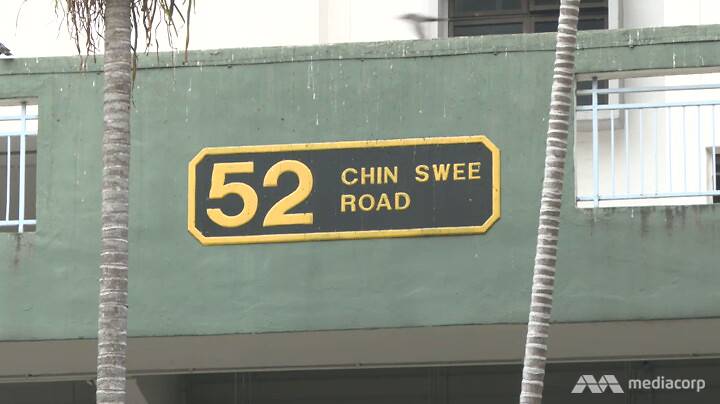
Block 52 Chin Swee Road.
According to experts, child abusers often face stressors such as a history of abuse or neglect as a child, financial difficulties, unemployment, marital woes, mental health issues and substance abuse.
Ms Serene Tan, director of Big Love Child Protection Specialist Centre, said: “These multiple stressors may make it difficult for the caregivers or parents to focus or prioritise the needs and safety of the children, thus resulting in caregivers and parents engaging in unhelpful or unhealthy ways of parenting and managing the children.”
Agreeing, Ms Ng from Heart@Fei Yue added that these issues also “lower the capacity of the parent to tolerate his child”.
Those who have suffered violence or neglect during their own childhood are also more susceptible to becoming abusive adults themselves, the experts reiterated.
HOW CASES ARE HANDLED
MSF receives referrals of suspected child abuse from various sources, such as social service agencies, law enforcement agencies, schools, hospitals and even members of the public.
The ministry’s existing network of welfare centres includes HEART@Fei Yue and Big Love, which see moderate to low-risk child protection cases.
READ: Chin Swee Road death – MSF reviewing how social support network can be strengthened
Heart@Fei Yue introduced its Triage system in 2014, which allows family service centres (FSCs) to refer cases straight to the agency after checking the case against the child abuse reporting guide and the specific screening guide — standard tools to decide the severity of cases.
Both centres also receive referrals from members of the public through their hotlines.
When they receive a referral, they ascertain and assess the safety of the child concerned to determine if he or she can remain in the care of the caregivers or parents, as well as the support and services required for the child, said Ms Tan of Big Love.
Big Love handled 365 cases from April last year to March this year — similar to the number of cases it saw between April 2017 and March last year.
The latest figures are a big jump from earlier years when it handled 252 cases between April 2016 to March 2017, and 177 cases between April 2015 and March 2016.
The welfare centres also reach out to schools, student care or childcare services as well as healthcare institutions for example, to ensure that at-risk families receive other forms of support and intervention to keep their children safe at home.
Preschool teachers Wajiha Begum, 23, and Fatin Natasha, 21, said that signs of child abuse include marks on the body and a drastic change in behaviour.
Ms Fatin said that when changing a child’s diapers, she would also look out for red marks or bruises in between the thighs, as well as blood. This could help determine if the child has been sexually abused.
Both teachers said they will usually question the child first before informing the parents. However, if the parents are suspected to be the perpetrators, the teachers will raise the issue with their centre’s principal, who will subsequently alert the authorities.
READ: Commentary: When does a touch become unsafe? When a 6-year-old discloses sexual abuse
Sometimes the mere intervention of teachers might have a deterring effect and that is why teachers can play a big role in detecting something is amiss, said Ms Fatin.
She added: “There must be an increase in awareness of child abuse not just among educators, but in our community as well because this can lead to earlier interventions.”
In response to queries, the National Institute of Early Childhood Development said it raises awareness among preschool education trainees based on existing guidelines by MSF. The trainees are also equipped with foundational information on how to identify signs of child abuse and neglect, and what the reporting procedures are.
In cases where the child is deemed to be at risk of abuse, alternative placement may also be recommended if the caregivers or parents are unable to keep the child safe, said Ms Tan. These include situations where the parent or caregiver has serious mental health concerns or there is spousal violence within the family.
Commentary: They don’t deserve to take so much away from me’ – how survivors of child sexual abuse find hope, recovery
Commentary: When children say they’ve been sexually abused, believe them
When there is no parent to care for the child, such as when both are arrested and imprisoned, the Child Protective Service will place the child with extended family members who are able to provide adequate care, said the MSF spokesperson.
If this is not possible, the Child Protective Service will consider placing the child with an MSF-registered foster parent or in residential care, which it checks on regularly.
Residential care provides a more targeted, intensive and specialised intervention for children and young persons with higher emotional and behavioural needs, the MSF spokesperson said.
MSF’s fostering scheme — an alternative care arrangement for children in need of a conducive home environment — is usually a short-term arrangement to meet the child’s needs.
Foster parents are provided with an allowance, which helps to defray the child’s daily expenses.
Recent amendments to the CYPA allow foster parents to make day-to-day decisions for the child. Under the new Enhanced Care and Protection Order, they can also make more substantial decisions. For example, foster parents will be able to make medical decisions with the MSF’s authorisation and in consultation with medical practitioners.
As of June, there were 542 children in foster care and 607 children in residential care.
For parents who are incarcerated, the Child Protective Service will assess whether it is safe for their child to be returned to them after their release.
“In situations where progress has been made and reunification is assessed to be timely and appropriate, increased contacts between the child and parents will be arranged through supervised meetings, outings and trial periods of home stay,” said the MSF spokesperson.
Ms Cheryl Ang, a senior child protection officer, said some parents would defend their actions as acts of discipline, and question the involvement of the Child Protective Service.
“At times, parents perceive that (the Child Protective Service) is undermining their parental authority and wants to break up families,” she said. “The denial of harm impedes our ability to work with the family on case plans that ensure the child’s safety at home.”
There has been an increasing number of cases with different types of abuse taking place within a family. These include physical abuse, family violence and intergenerational abuse where abuse victims inflict violence on their own children.
These families may require more intensive intervention as there are many issues to address, Ms Ang added.
Commentary: A wake-up call, when a disadvantaged child gets 8 out of 100 for an exam
In September, an amendment to the CYPA was also passed in Parliament which allows the authorities to intervene in cases of abuse involving young children.
The age limit of what is considered a young person was also raised from 16 to 18.
ROLE OF COMMUNITY
While laws have been tightened and more official resources set aside to deal with the problem, these alone will not be sufficient to stop child abuse.
The community at large, especially neighbours and relatives, have an important role to play in responding to victims’ cries of help — sometimes, literally.
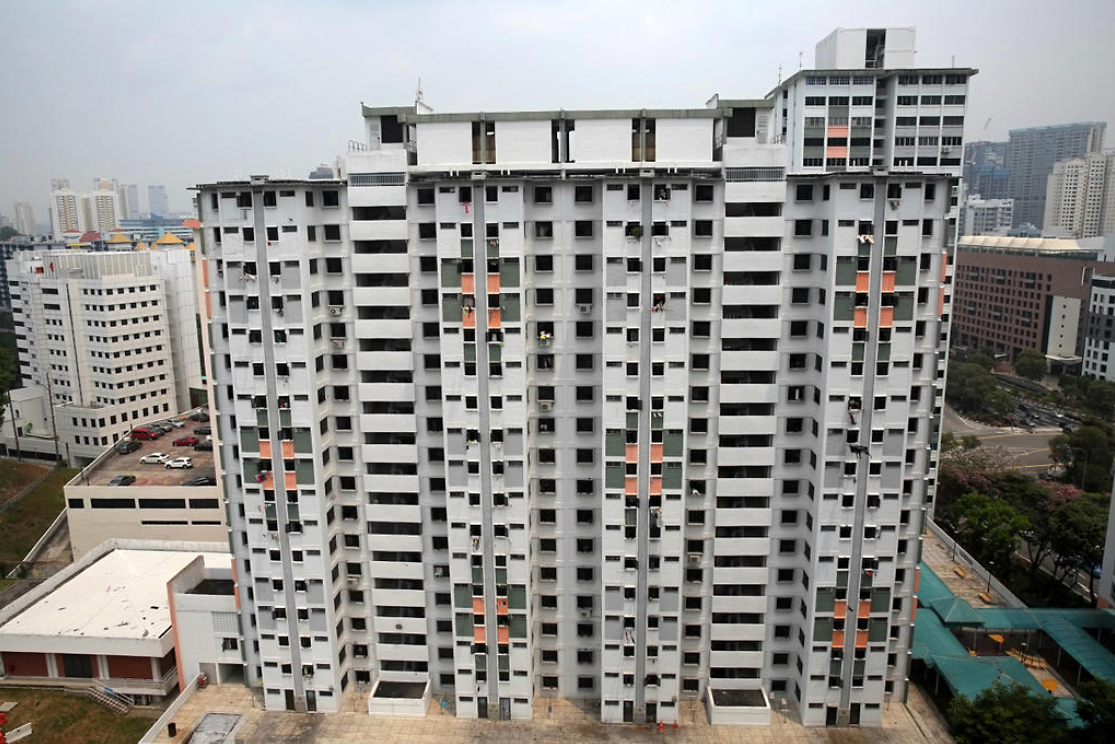
Block 52 Chin Swee Road. (Photo: Nuria Ling/TODAY)
MSF cited a case last year where a family heard a loud commotion from an adjacent block and successfully intervened in a domestic violence incident.
The family managed to protect the victim from physical harm and calmed down the perpetrator while waiting for the police to arrive.
However, some Singaporeans spoken to admitted that it is not in their nature to be “busybodies” and intervene in their neighbours’ domestic affairs.
Insurance agent Aaron Tay, 31, said he often hears his neighbours quarrelling in their flat in Yew Tee, but would not interfere because he didn’t want to be called “kaypoh”.
Retail assistant Nurashima Jaafar, 29, who lives in Bukit Batok, added: “Since we live in flats that are so close to each other, it is normal that you get to listen in on your neighbours’ conversation.
“But I think I will only check in on my neighbours if I clearly hear a call for help or the sound of people getting beaten up.”
Pointing out that the reasons for child abuse are often complex, the MSF spokesperson reiterated that child protection is a collective responsibility.
“With the support of the community to stand up for vulnerable individuals and report suspected cases of abuse, networks can be strengthened to prevent child abuse and keep our children safe,” said the spokesperson.
SCARS REMAIN LONG AFTER ABUSE ENDS
Children who suffer abuse are highly likely to develop emotional or mental scars, and most of the abuse victims interviewed said they continue to suffer from anxiety and depression even after the abuse had long ended. Some also had to deal with anger-management issues.
To help victims get back on their feet, MSF said it provides counselling or casework management services by FSCs, as well as targeted counselling or psychotherapy sessions by psychologists or counsellors from the ministry, the Institute of Mental Health and other community agencies.
“As child abuse can impact children and young persons in different ways, programmes are tailored to their needs, to equip them with self-protection strategies, address their trauma or specific needs arising from the abuse and support them back on their road to recovery,” said the MSF spokesman.
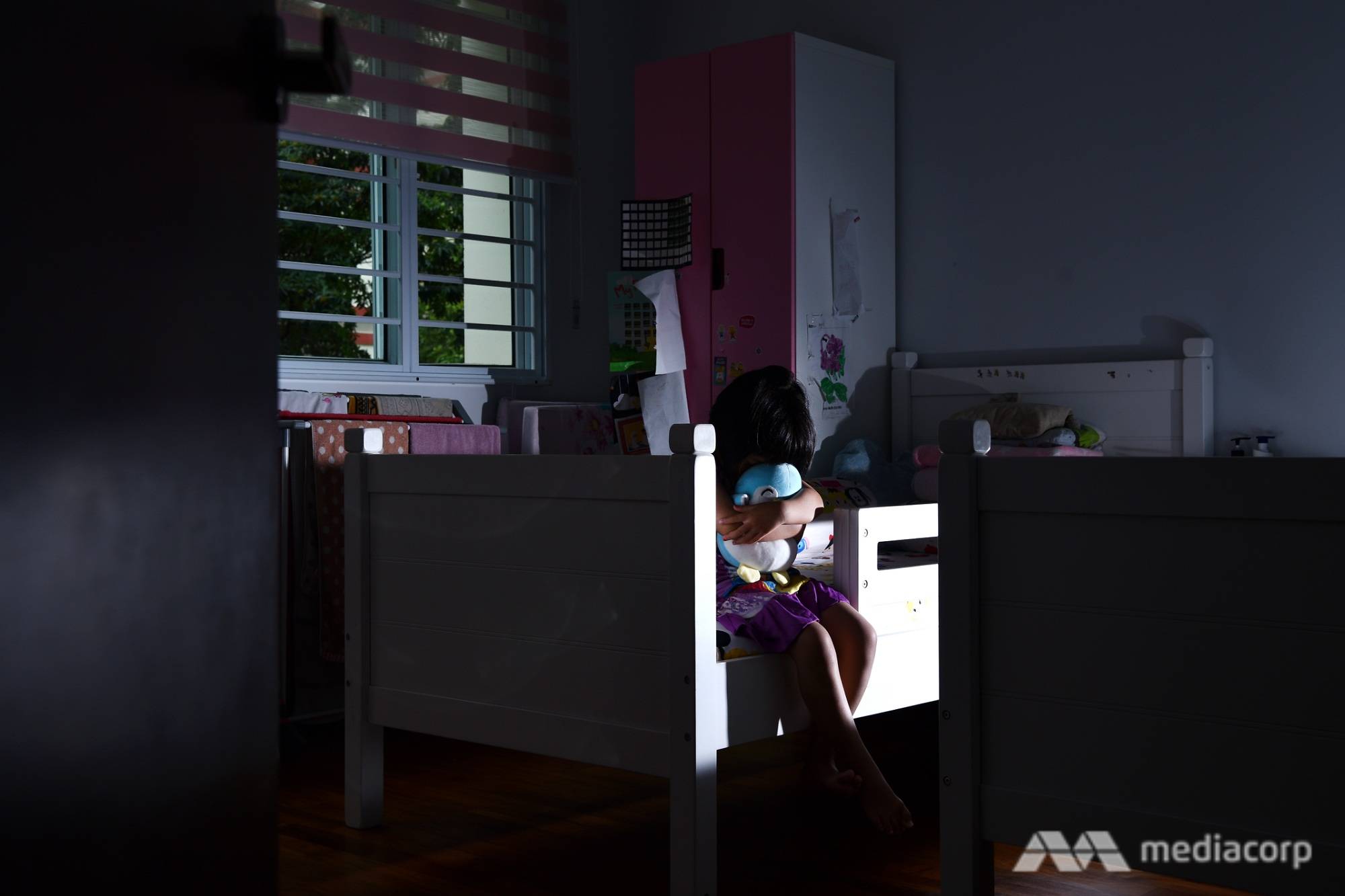
Photo illustration of a child in distress. (Photo: Jeremy Long)
June, for example, said she still gets triggered by a man’s touch, or a picture or mention of male genitalia.
Three years ago, she found herself in a downward spiral, having suicidal thoughts. Her brother intervened when she attempted to take her own life and called the authorities. The episode prompted her to open up to her brother and she subsequently sought help in the form of therapy.
Likewise, Nur said that certain things — such as being near a source of hot liquid — would make her anxious and cause her heart to race.
She was diagnosed with depression when she was 17, and would hardly talk to anyone for weeks at a time.
But she would force herself to go to work, as she was trying to earn enough money to be able to rent a place to live in.
She also considered herself lucky to have met her husband, who was then her colleague at the workplace.
“He helped me with my anger issues. I was a very angry teenager and I would act out whenever I could,” said Nur.
After getting married last December, she vowed to herself that she would not allow her future children to suffer from any form of violence in the family.
Meanwhile, Ben and Chong, who are still staying with their abusive fathers, said they have grown distant from their parents.
Talking about his father, Ben said: “As the years go by, I learn about the things that will trigger him least. I try to do well in school and follow his instructions.”
He added: “When you grow up, you’ll realise that even your parents are not perfect.”
The scars remain for a long time not only for ex-victims of child abuse — but sometimes, for former abusers themselves.
Mohd said the guilt of killing a child would stick with him forever.
“I wished I had someone I could turn to at that time. Maybe my emotions wouldn’t pile up and I wouldn’t have exploded,” he said. “I still can’t forgive myself, up till now. I never thought I was able to hurt a child with my bare hands.”
Cusping his face in his hands, he added: “I loved that child. If I could do it all over again, I would have sought help or go nowhere near her.”
